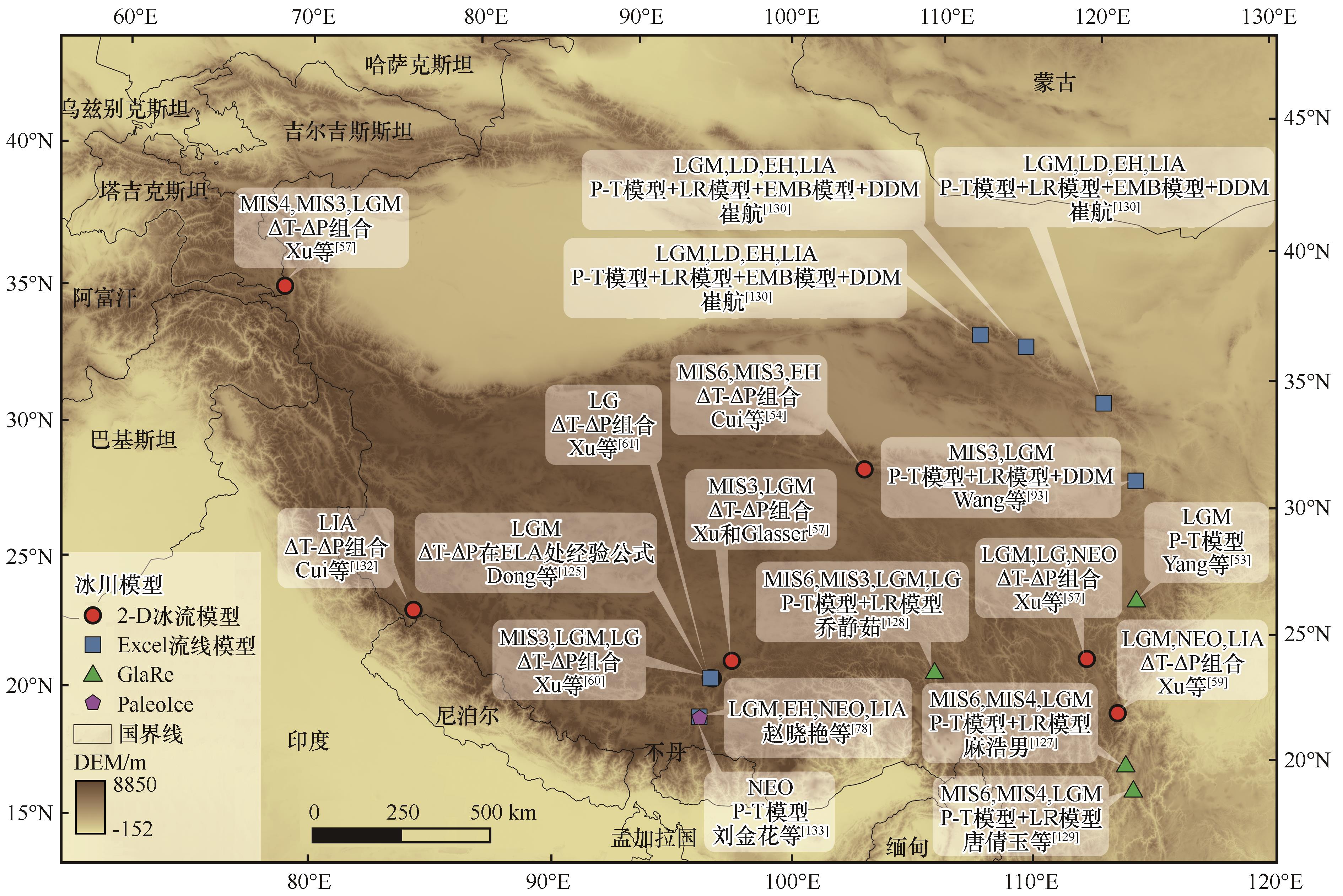冰川模型及其在古冰川模拟研究中的应用
Glacial models and their applications on palaeo-glacial reconstruction

冰川模型及其在古冰川模拟研究中的应用 |
| 李英奎, 杨玮琳, 陈鑫, 刘强, 许向科 |
|
Glacial models and their applications on palaeo-glacial reconstruction |
| Yingkui LI, Weilin YANG, Xin CHEN, Qiang LIU, Xiangke XU |
| 图4 青藏高原及其周边山地基于地貌-冰面剖面形态模型(Excel流线模型、GlaRe、PaleoIce)和物质平衡-冰川动力耦合模型的稳态模拟方式(2-D冰流模型)估算的不同冰川发育时期古气候参数的案例研究(基于地貌-冰面剖面形态模型的古气候参数估算方法包括P-T模型、LR模型、ΔT-ΔP在ELA处经验公式、EMB和DDM模型。基于2-D冰流模型的古气候参数主要通过不同的ΔT-ΔP组合确定。MIS-深海氧同位素阶段;LGM-末次冰期全盛期;LD-末次冰消期;LG-晚冰期;EH-早全新世;NEO-新冰期;LIA-小冰期) |
| Fig. 4 Summary of the palaeo-climate reconstruction studies for various glacial stages on the Tibetan Plateau and its surrounding mountains based on the landform-ice surface profile models (Excel flowline model, GlaRe, and PaleoIce) and the coupled mass balance-glacial dynamic model (2-D ice flow model). For the studies using the landform-ice surface profile models, the palaeo-climate information has been estimated based on the P-T model, LR model, the ΔT-ΔP empirical relationship at ELA, as well as the EMB and DDM models. MIS-marine oxygen-isotope stages; LGM-Last Glacial Maximum; LD-Last Deglaciation; LG-Lateglacial; EH-Early Holocene; NEO-Neoglacial; LIA-Little Ice Age |

|